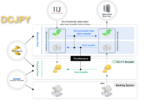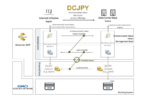This is a guest opinion post from Anna Roberts of iov42.
The need for climate action is unquestionably one of urgency. From the UN ‘Code Red’ climate report to ever increasing catastrophic weather events, it’s clear that the world must take this seriously and fast. This week’s COP26 summit hopes to ignite some united action, but governments risk falling short of their own targets unless new beneficial technologies are embraced. If environmental ambitions for the next decade are to become a reality, now is the time for governments to abandon the misconception that blockchain remains too abstract to harness and instead equip themselves with the tools and technology to trigger an era of healing.
While there are some positive signs of innovation within this space from the international community, such as the development of the European Blockchain Services Infrastructure, some are still concerned that blockchain itself is energy consuming, especially when it comes to cryptocurrency. However, enterprise blockchains can actually reduce energy usage as they scale rather than creating as much of a problem as they’re trying to solve. The environmental benefits of utilizing blockchain for industry and enterprise are substantial, and as it stands, they remain somewhat untapped. But if ESG targets are to be met internationally, it’s time for leaders to take note.
Decentralized ledger technology can provide new levels of traceability and transparency for environmentally-impactful supply chains, such as timber and agriculture – supply chains that have far-reaching societal and economic impacts too. This means that irresponsible sourcing can be eradicated and accountable decision-making promoted through a visible, secure audit trail of actions. Curtailing deforestation, which is one of the pre-established goals of the COP26 summit, can be achieved using tools such as Timber Chain, which digitalizes human processes and holds identities to account. This is game-changing for industries susceptible to vulnerability, and especially those most impactful to our environment.
This is why blockchain-powered solutions are needed. They enable governments and organisations to ensure regulatory compliance and track and report on reducing carbon footprints, in turn allowing leaders to become better informed. Until recently, the development of green smart contracts was hindered by the inability of blockchains to interact meaningfully with data about the state of the environment. However, they are finally becoming production-ready, meaning that developers globally are able to build applications around carbon offsets, crop yields and air quality.
It’s clear that these tools must have a place on the agenda for the November meeting of the world’s most powerful nations. Blockchain – when integrated with other technologies – can help us practically deliver the necessary action to slow down the climate crisis, but only if its potential is properly recognized, and soon.
Thankfully, it’s clear that public and private investors are starting to take notice of this type of technology. The global value of blockchain innovations for agriculture is expected to grow to nearly £420 million by 2023. However, it’s fair to say that despite an increase in interest, blockchain technology overall is still in its infancy and requires further research and piloting efforts to achieve large-scale adoption. The COP26 summit is an opportunity to speed up this process.






